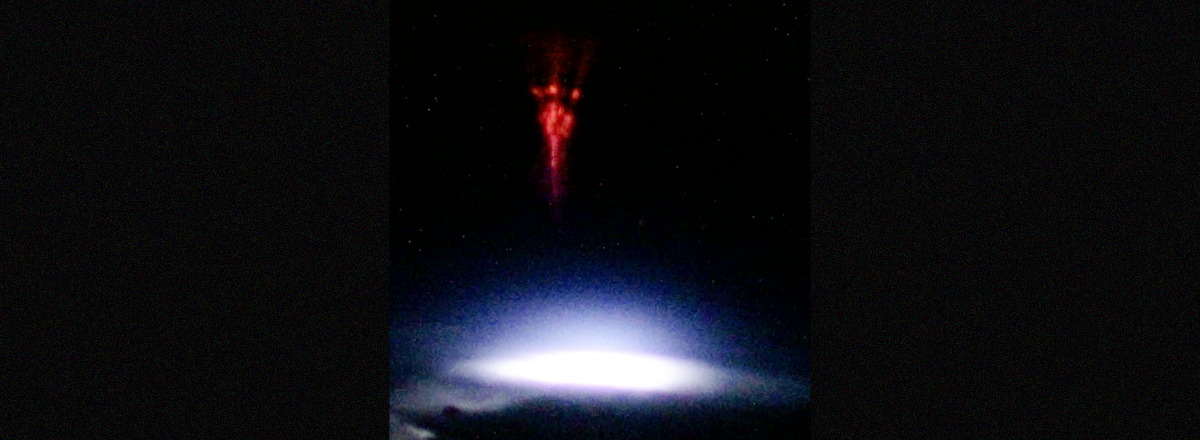ESA Astronaut Captures a Rare Thunder Phenomenon Above Earth
To capture this nearly instantaneous event, Mogensen used a Davis camera, capable of taking up to 100,000 images per second, functioning much like the human eye.

Andreas Mogensen, an astronaut from the European Space Agency (ESA), has captured a stunning image of an elusive red sprite, a rare thunderstorm phenomenon known as a Transient Luminous Event (TLE).
This remarkable photograph was taken as part of the Thor-Davis experiment, which aims to study lightning in the upper atmosphere and its potential impact on greenhouse gas concentrations. To capture this nearly instantaneous event, Mogensen used a Davis camera, capable of taking up to 100,000 images per second, functioning much like the human eye by detecting changes in contrast rather than merely snapping pictures.
Red sprites, which occur above thunderclouds at altitudes ranging from 40 to 80 kilometers above the Earth's surface, are essentially lightning bolts but above the clouds. Since sprites form above thunderstorms, they are rarely visible from the ground, making space observations crucial in their study.
From the captured image and video, scientists estimate the red sprite's size to be approximately 14 by 26 kilometers.
These images provide valuable insights into the fascinating world of upper-atmosphere lightning and contribute to our understanding of Earth's atmospheric processes. As such phenomena are rarely seen from the ground, space-based observations are pivotal in advancing our knowledge of these mesmerizing natural events.

